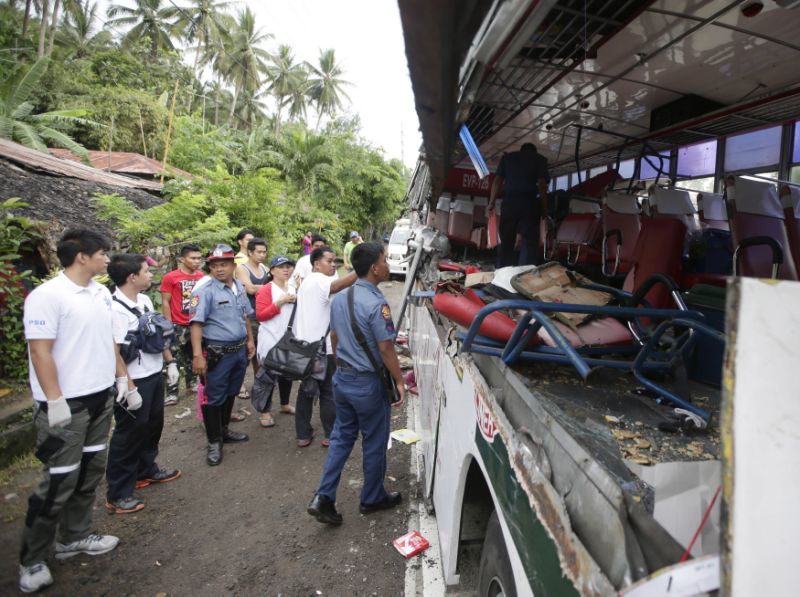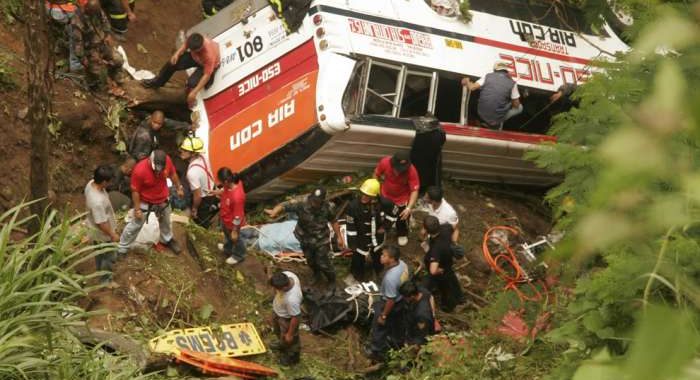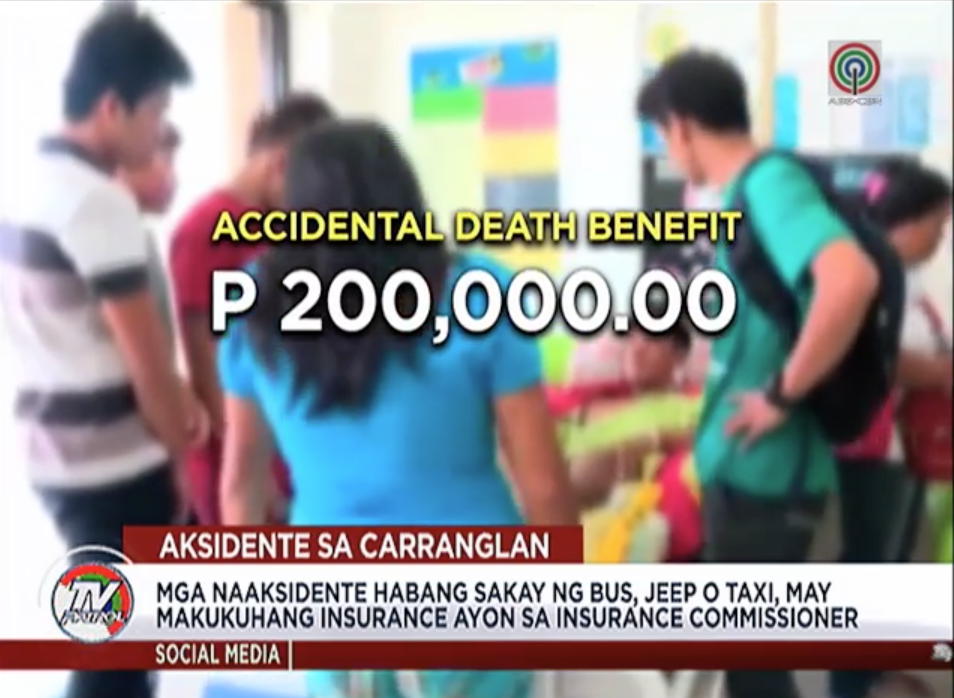By IRA V. PANGANIBAN
Nine days before Christmas three years ago, a Don Mariano bus fell off the Skyway in Bicutan, Taguig and landed on a delivery van below, crushing the driver to death.
The bus driver survived but 18 of his passengers never got to celebrate Christmas. At least 20 were injured.
Investigation later showed that the bus had worn-out tires and the driver tested positive of banned drugs and was over speeding.
Much earlier, on July 4, 2012, a Don Mariano bus also went over the railing of the EDSA flyover in Ortigas, Pasig City. Ten passengers were hurt. A massive traffic jam followed while the bus hung on the railing of the flyover for hours.
Investigation showed the bus was over speeding and the driver was texting when the crash happened.
A 2003 Asian Development Bank report says that a combination of driver error and speeding are the two leading causes of vehicle crashes in the Philippines. The report showed that driver error takes 26 percent of the causes while speeding is at 18 percent. Worldwide, this has caused over one million deaths and more than 23-million injuries.
The Philippines alone has a record of 995 persons killed and over 6,790 injured in road crashes nationwide in 2003 according to the same report. The ADB report is quick to add that these figures may be higher because of severe under-reporting by local authorities. ADB’s estimates are more in the 9,000 killed and 493,970 injured figures.
This year, two major legislations that address road safety lapsed into law – the speed limiter law and the anti-distracted driving law. Senator Joseph Victor Ejercito, lead proponent of the speed limiter bill in the Senate said these two laws should help in the campaign for safer roads.
“It is really important that we make motorists safer on the roads because many of the victims are pedestrians and even children. Besides, it is very tragic when someone dies or becomes incapacitated because of some reckless person driving a metal menace on the roads,” Ejercito said.
A June 2009 report of Safe Kids Philippines show that some 3,600 Filipino children who walk to school die due to road crashes every year. These numbers are now more prone to get higher as over 2-million children walk to schools.
Former PNP Highway Patrol Group Director C/Supt. Arnold Gunacao said many road crashes happen because drivers are driving too fast but are not alert enough to react when trouble occurs.
“Bus drivers in Metro Manila for example, will drive very fast because they need to make as many trips as they can. But these drivers have been working for more than 12-hours already. Their attention and alertness are compromised and when something happens on the road, they cannot react swiftly or correctly, then they crash and hurt or even kill people,” Gunacao says.

Commuter groups have demanded that speed limiters, like those installed in British, African and Australian buses and trucks, be installed in big vehicles plying Philippine roads.
And while there are a few of these aftermarket brands, like Autokontrol, which have been in the market for quite some time, until the passage of the speed limiter law, no bus or truck company even thought of installing them for safety.
Road safety advocates like James Deakin says the speed limiter law, anti-distracted driving law and a dash-cam law should lower the incidence of death caused by road crashes. But he is quick to say that until driving education is improved, it will be difficult to see a huge drop in road crash injuries or fatalities.
“It’s how we drive that is the real cause of all these crashes. Many drivers have never had real formal training in driving. What we have are people who know how to operate a machine but have no idea of the nuances of road and traffic discipline. To them it is always a race,” says Deakin.
And many agree that until these drivers, especially those who drive for a living, actually get proper training and compensation, they will always race each other for that next fare and then race home to feed their family. And at the speed that which they do this, they may never get home.
This story first came out in Autocar Philippines, and was produced under the Bloomberg Initiative Global Road Safety Media Fellowship implemented by the World Health Organization, Department of Transportation and Communications and VERA Files. #SafeRoadsPH





